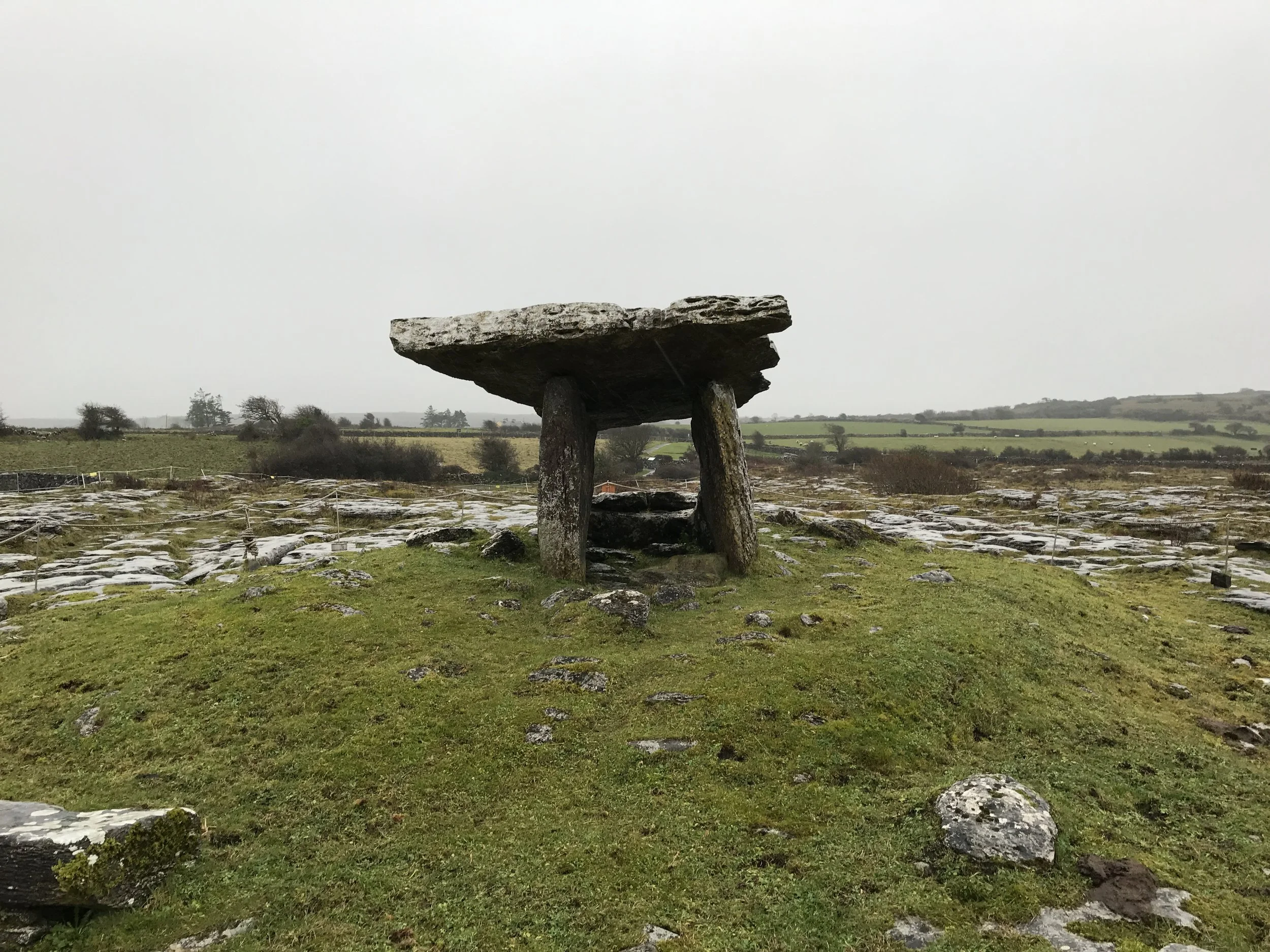Poulnabrone has stood in the same spot for over five thousand years, and is accessible to all due its close proximity to the road.
With castles and looming nineteenth century manors, Ireland is well-known for its well-preserved parts of modern history. With much less fanfare, however, Ireland also has a number of well-preserved pieces of ancient history, such as Newgrange, and various portal tombs scattered around the island. While there are over one hundred and seventy portal tombs in Ireland in various states, none is more well-known, visited, and photographed than the Poulnabrone Portal Tomb. Before discussing the many unique features of Poulnabrone, it’s helpful to have a frame of reference as to what “Portal Tombs” or “Dolmens” were. While no one is entirely sure what portal tombs were constructed for, given the length of time that has passed – some five to six thousand years – they are classified as two standing stones standing parallel that are covered by a large top roof stone (known as a “capstone”). And, while no one knows exactly for sure, the “portal” aspect of the tomb was that of a gateway to the “Otherworld” – either keeping it out of our world, or for providing access between realms.
Poulnabrone is located in the Burren portion of Ireland, which has geologic features unlike the rest of the island.
In terms of Poulnabrone, it’s beyond fascinating to visit the site because in one way or another, it is a structure that has stood in that location for at least some five thousand years. The tomb itself has been dated to at least 4200 B.C.; and is comprised of three standing stones some six feet tall and twelve feet wide. While it appears to have withstood the last five thousand odd years intact, in reality in 1985, the capstone of Poulnabrone cracked, which allowed archeologists to both explore and partially excavate the site before repairing and replacing the capstone.
To visit Poulnabrone, visitors must traverse a short section of the rocks of the Burren.
While there was a long list of items discovered at the site, the main finding was that over twenty-two separate individuals were buried in the site – sixteen adults, six children, and one baby; and these individuals had been interred after their remains were already skeletal. One of the other interesting facts about the site that was discovered at the time of the excavation is that the stones of the megalith were not from the local area, which meant that they had to be quarried – and carried – or dragged from a location that was miles away. While this may sound unremarkable on its face, it is very interesting considering that the region that Poulnabrone is located in is covered in exposed limestone that could have been used for the structure. Finally, in addition to the stones of Poulnabrone not being from the immediate area, it is unclear how they were raised into place and held in place without any sealing materials, such as concrete.
Poulnabrone Portal Tomb
Directions: Poulnabrone is located in the Burren, a fantastical karst limestone landscape that looks less like Ireland, and more like the surface of the moon. While the landscape would have looked somewhat different at the time Poulnabrone was constructed, today the dolmen dominates the rocky area, and is visible from both sides of the R480, of which it is directly next to. The nearest town to Poulnabrone is Ballyvaughn, which it is nine kilometers south of on the R480. Irrespective of which way visitors are approaching Poulnabrone, it is well-signed, and visible.
Poulnabrone Portal Tomb
From the parking area, there is a short flat walk on a path to the tomb, along which there are numerous interpretive panels that provide excellent information on the structure and the historic context it was constructed in. The last section of the walk is across the limestone of the Burren, and visitors of the area should take care not to trip or slip, as there are a number of cracks in the area that can be treacherous for footing even when dry conditions exist.
Tips: While the parties whom constructed Poulnabrone have long passed on, visitors should treat the site with respect as it was a long-standing sacred site and a grave for numerous individuals, and stay behind the rope barrier for the tomb. For intrepid explorers in the region looking for a day trip, Poulnabrone can be visited along with St. Brigid’s Well, the Cliffs of Moher, Corcomroe Abbey, and Aillwee Cave as a Burren adventure experience.
